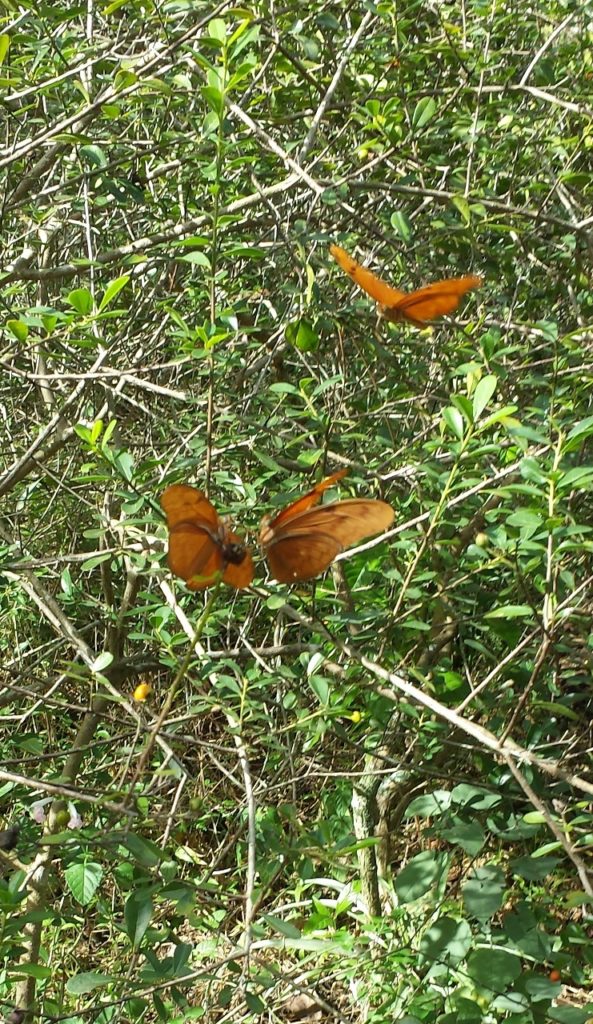
Smooth Strongbark
Bourreria cassinifolia
There are only a few remaining natural locations of Smooth Strongbark shrubs left in Miami-Dade County and the Florida Keys. It is on the State’s endangered species list.
Smooth Strongbark is also called Pineland Strongbark and Little Strongbark. Strongback is also used in reference to a tea make from the leaves in the Bahamas. This tea helps a man do what needs to be done.
The almost constant fragrant white flowers, small orange fruit which is edible but bitter, one inch oval leaves and low height make this a superb border shrub that stays below four feet and can be kept much lower. It is very drought tolerant, yet is not found near salt wind or water conditions or areas that flood.
Several butterflies come to the flowers, and the dried rotting fruit is especially attractive to butterflies like the Julias shown here and Soldiers. Birds love the berries.
The chemicals leaked by the rotting fruit are lapped up by the male butterflies and converted into “perfume” which is given off to attract females. Notice the two male Julias fighting over a dried berry.
There is a much taller cousin, the Bahama Strongbark, that is more common in the upper keys near Key Largo and makes a nice front yard tree. A planting containing both will provide upper and lower canopy cover of similar looking plants.
Try these two and add in Quailberry for the lowest level of cover. Of course, Little Strongbark can be blended with many other hammock species as long as it gets full sunlight. A Florida Keys combination will look the best.
In this case I would combine Lignum Vitae, Joewood, Pineland Croton, Beach Creeper, all of the native palms of the Keys, Black Torch, Florida Boxwood, Coontie, Maidenberry, Sand Cordgrass and numerous other wildflowers to create a stressed look similar to what you might find in the windswept Keys.